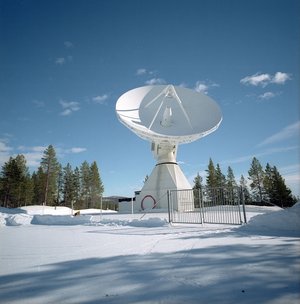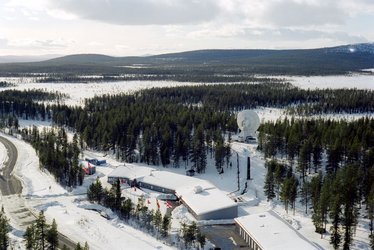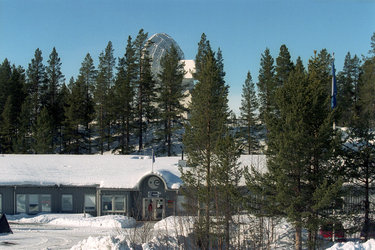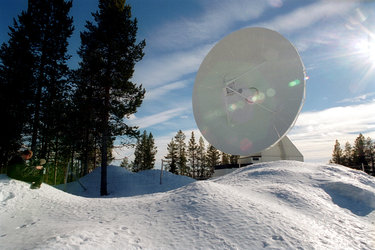Accept all cookies Accept only essential cookies See our Cookie Notice

About ESA
The European Space Agency (ESA) is Europe’s gateway to space. Its mission is to shape the development of Europe’s space capability and ensure that investment in space continues to deliver benefits to the citizens of Europe and the world.
Highlights
ESA - United space in Europe
This is ESA ESA facts Member States & Cooperating States Funding Director General Top management For Member State Delegations European vision European Space Policy ESA & EU Space Councils Responsibility & Sustainability Annual Report Calendar of meetings Corporate newsEstablishments & sites
ESA Headquarters ESA ESTEC ESA ESOC ESA ESRIN ESA EAC ESA ESAC Europe's Spaceport ESA ESEC ESA ECSAT Brussels Office Washington OfficeWorking with ESA
Business with ESA ESA Commercialisation Gateway Law at ESA Careers Cyber resilience at ESA IT at ESA Newsroom Partnerships Merchandising Licence Education Open Space Innovation Platform Integrity and Reporting Administrative Tribunal Health and SafetyMore about ESA
History ESA Historical Archives Exhibitions Publications Art & Culture ESA Merchandise Kids Diversity ESA Brand Centre ESA ChampionsLatest
Space in Member States
Find out more about space activities in our 23 Member States, and understand how ESA works together with their national agencies, institutions and organisations.
Science & Exploration
Exploring our Solar System and unlocking the secrets of the Universe
Go to topicAstronauts
Missions
Juice Euclid Webb Solar Orbiter BepiColombo Gaia ExoMars Cheops Exoplanet missions More missionsActivities
International Space Station Orion service module Gateway Concordia Caves & Pangaea BenefitsLatest
Space Safety
Protecting life and infrastructure on Earth and in orbit
Go to topicAsteroids
Asteroids and Planetary Defence Asteroid danger explained Flyeye telescope: asteroid detection Hera mission: asteroid deflection Near-Earth Object Coordination CentreSpace junk
About space debris Space debris by the numbers Space Environment Report In space refuelling, refurbishing and removingSafety from space
Clean Space ecodesign Zero Debris Technologies Space for Earth Supporting Sustainable DevelopmentLatest
Applications
Using space to benefit citizens and meet future challenges on Earth
Go to topicObserving the Earth
Observing the Earth Future EO Copernicus Meteorology Space for our climate Satellite missionsCommercialisation
ESA Commercialisation Gateway Open Space Innovation Platform Business Incubation ESA Space SolutionsLatest
Enabling & Support
Making space accessible and developing the technologies for the future
Go to topicBuilding missions
Space Engineering and Technology Test centre Laboratories Concurrent Design Facility Preparing for the future Shaping the Future Discovery and Preparation Advanced Concepts TeamSpace transportation
Space Transportation Ariane Vega Space Rider Future space transportation Boost! Europe's Spaceport Launches from Europe's Spaceport from 2012Latest

Kiruna's facilities
Thank you for liking
You have already liked this page, you can only like it once!
The Kiruna S-band and X-band station primarily supports the European Remote Sensing satellites, ERS-1 and ERS-2. It is equipped for tracking, telemetry and command operations as well as for reception, recording, processing and dissemination of data from the sensor instruments on-board the two satellites.
The Kiruna station is located at Salmijärvi, which is 38 km east of Kiruna in northern Sweden. The coordinates of the ERS-1/ERS-2 antenna are 67.85712518 deg. N latitude and 20.96434169 deg. E longitude. The antenna is sited at 402.275 m with respect to the WGS-84 reference ellipsoid.
The Kiruna station primarily supports ERS-1 and ERS-2 missions. The station comprises a Telemetry Tracking Command and Data Acquisition Facility (TTCDAF) and a Data Processing and Product Distribution Facility (PRODIS).
The station operates in S-band for uplink and downlink and in X-band for downlink only. In addition to the normal TTC functions of a ground station the TTCDAF includes a Reference Measurement System (RMS) for routine measurements of S-band and X-band satellite signals from the ERS satellites.
The station is connected to the Mission Management and Control Centre (MMCC) at ESOC via dedicated voice and data circuits. The station is remotely monitored and controlled from the MMCC under nominal operating conditions. A mini control centre is located at the station to provide backup in the event of a serious problem being encountered at ESOC.
ERS payload data is recorded at the station during a pass. After a pass, the recorded data is played back, processed, and distributed to the users by various methods.
-
CREDIT
ESA - S.Corvaja -
LICENCE
ESA Standard Licence and Additional permission may be required
(contact spaceinimages@esa.int for further information)

Kiruna's facilities

Panoramic view of ESA's ground station in Kiruna

Main entrance to Kiruna's control center

Main entrance to Kiruna's control center















 Germany
Germany
 Austria
Austria
 Belgium
Belgium
 Denmark
Denmark
 Spain
Spain
 Estonia
Estonia
 Finland
Finland
 France
France
 Greece
Greece
 Hungary
Hungary
 Ireland
Ireland
 Italy
Italy
 Luxembourg
Luxembourg
 Norway
Norway
 The Netherlands
The Netherlands
 Poland
Poland
 Portugal
Portugal
 Czechia
Czechia
 Romania
Romania
 United Kingdom
United Kingdom
 Slovenia
Slovenia
 Sweden
Sweden
 Switzerland
Switzerland
























